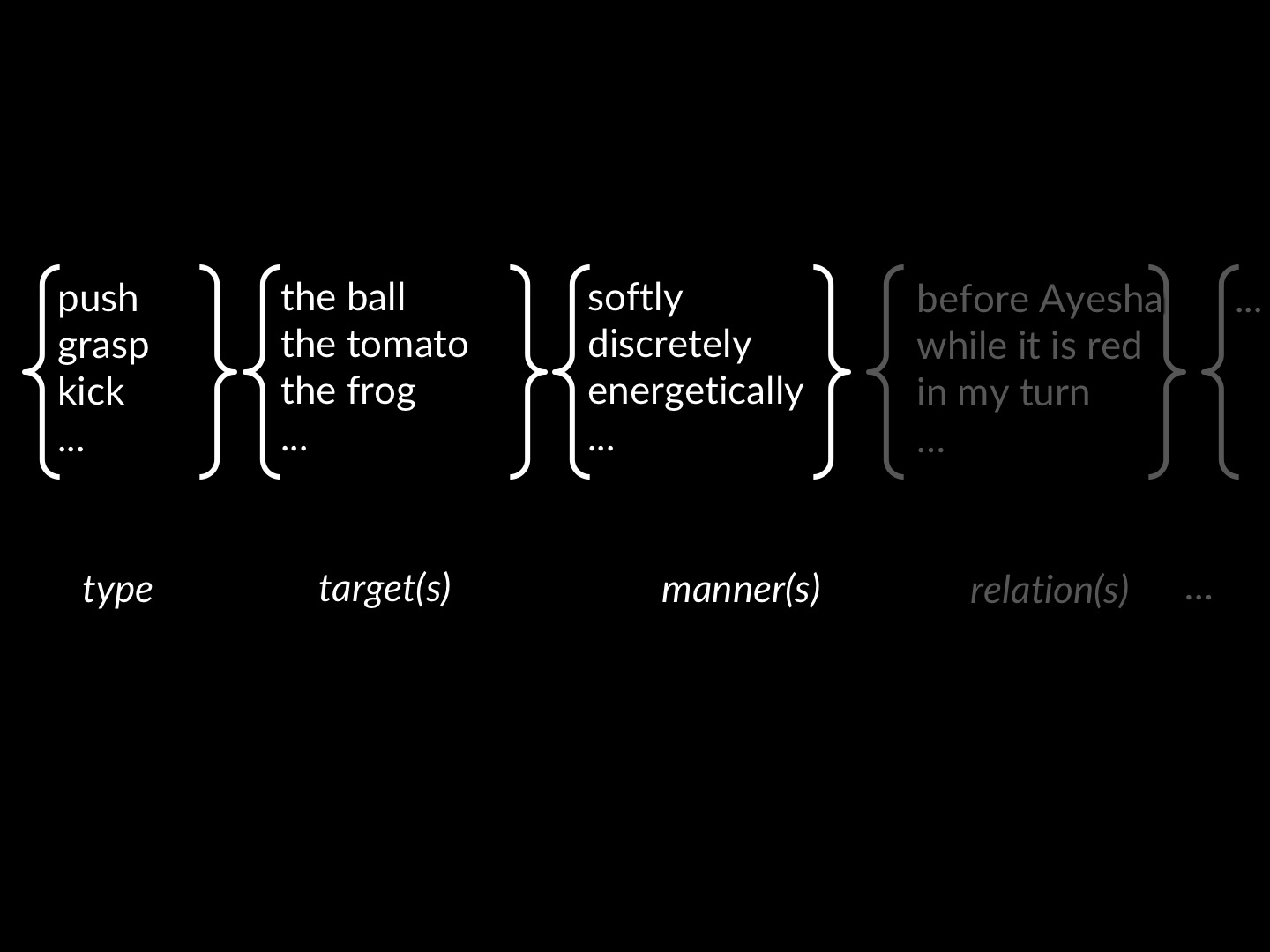To answer this question, we would ideally have pairs of scenarios in which the target of an action
is kept constant while the type of action varies.
To the extent that subjects respond appropriately to the difference in type of action, we can be
confident that they can distinguish actions not just by their targets but also by their types.
This is illustrated here, where you are habituated to a grasping event and the test events are
(a) grasping but with novel kinematics (from a different angle), or (b) a novel goal event (pushing).
Unfortunately, as far as I know this has not yet been done.
But there are some studies which, although not intended to get at exactly the issue of whether
infants track goals and not just targets of actions, do indirectly shed light on this issue.
These studies demonstrate competence in goal-tracking from nine months of age, and give us no reason
to doubt that, in simple enough cases, infants might show competence in goal tracking much earlier.
Behne, Carpenter, Call, & Tomasello (2005) created just such pairs of contrasting scenarios.
In one of their contrasts, an experimenter holds a ball out for an infant to grasp and then
either ‘accidentally’ drops it or teasingly pulls it back.
So in each case there is a goal-directed action involving the ball, but in one case the goal
of the action is to pass the ball to the infant whereas in the other case the goal is to
tease the infant.
Behne et al. (2005, p. Study 2) found that nine-month-olds (but not six-month-olds)
consistently and appropriately discriminated between these scenarios by, for example,
banging more when the ball was ‘accidentally’ dropped than when it was teasingly retracted.
This and other research
(e.g. Ambrosini et al., 2013) suggests that, at least from nine months of age,
infants can indeed distinguish both the type and target of a goal-directed action.
% Ambrosini et al. (2013) is important: shows that type of grasp and not just target is tracked, implying that anticipatory looking is not merely perceptual animacy.









